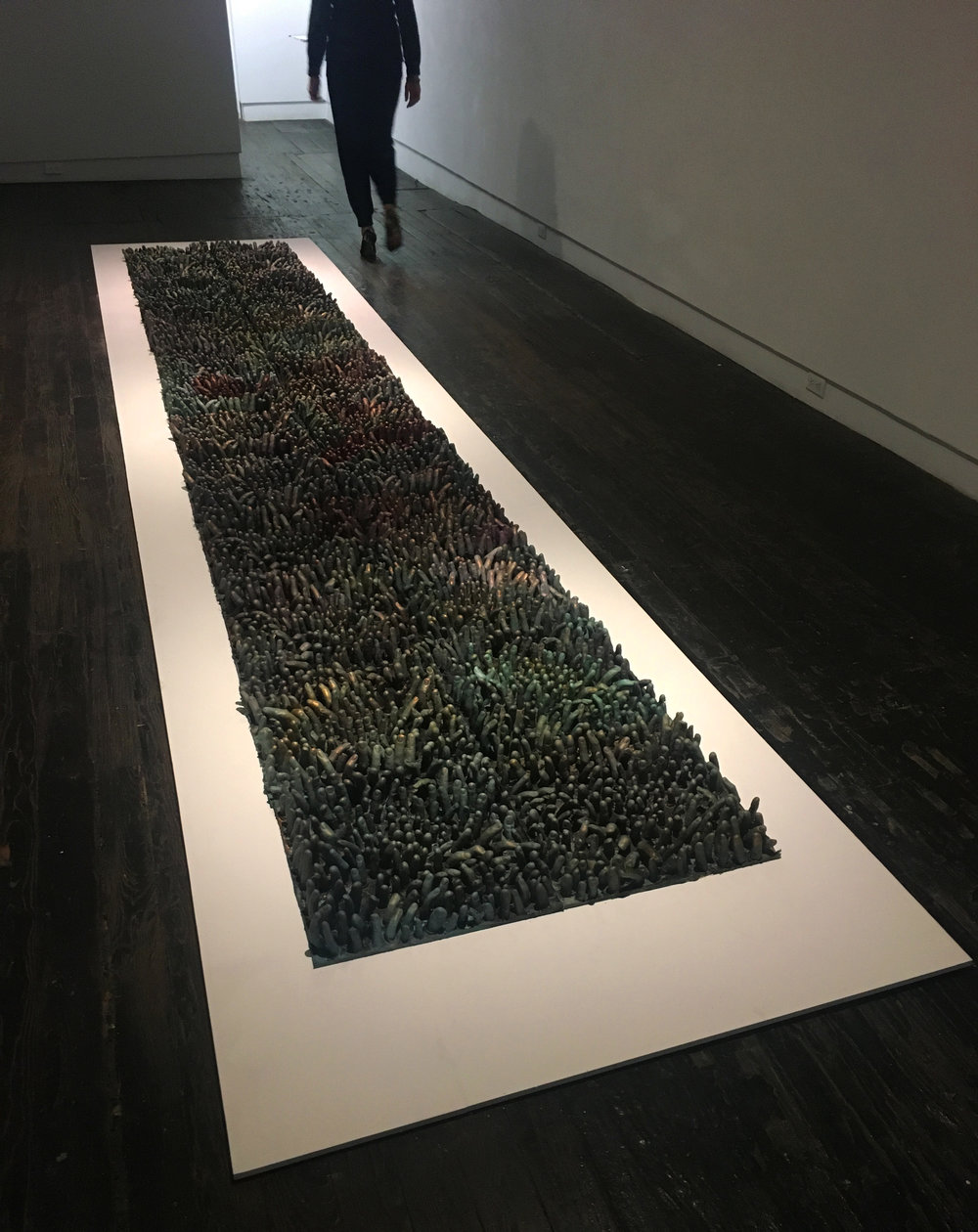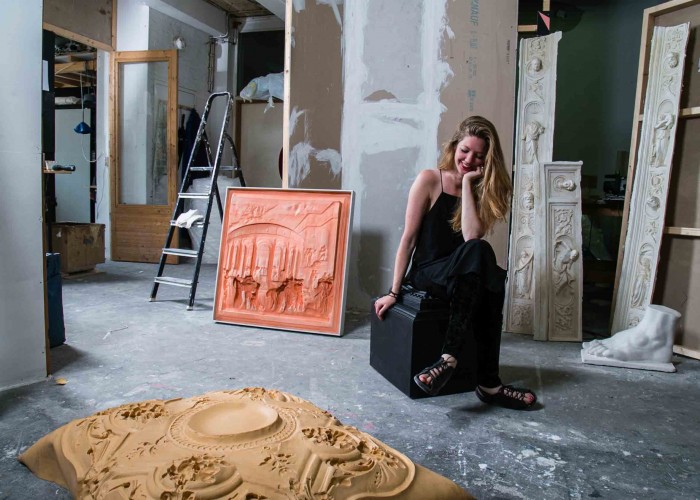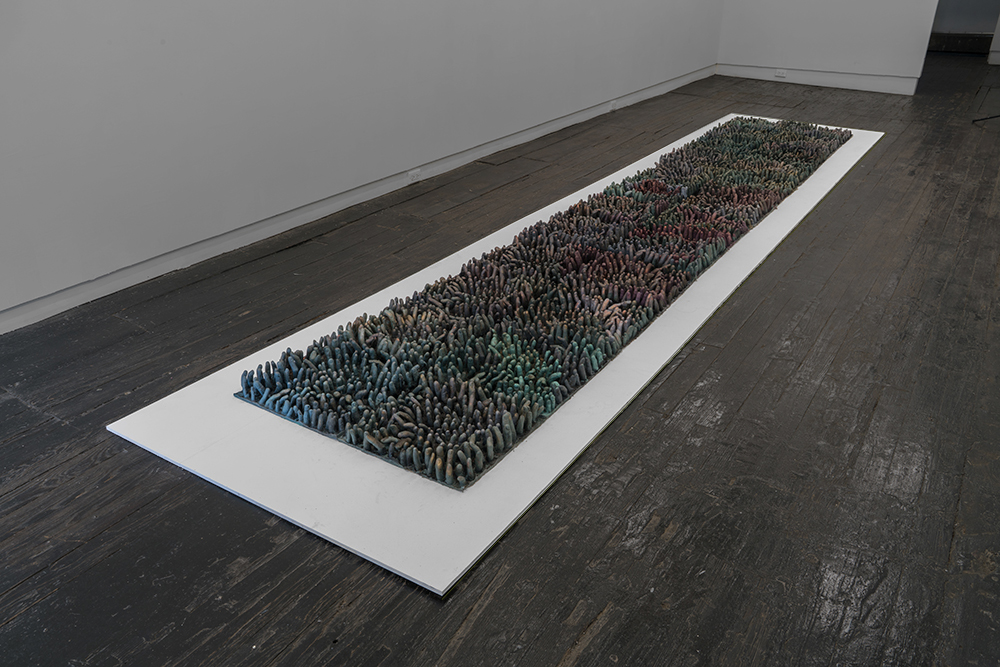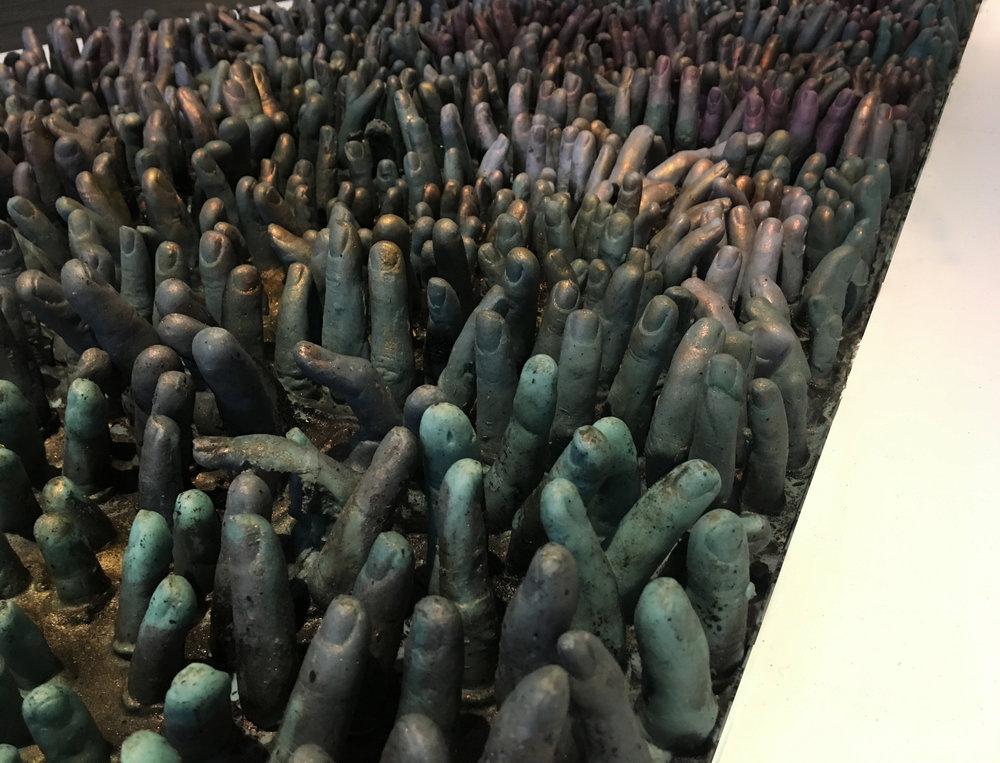Aesthetic and unsettling – two words that accurately describe “Sankofa” (2017) by Dutch designer Nynke Koster. The colorful rug made of cast rubber fingers might seem comical at first; however, on closer inspection the artwork becomes deeply disturbing. Stretching the full length of LMAK Gallery located in the Lower East Side of New York, Nynke Koster’s rug represents hundreds of hands reaching out of the ground. Who do these hands belong to? What do they reach for? What does the rug try to make clear?

“Sankofa” (2017) by Nynke Koster – LMAK Gallery, New York, NY
The artwork refers to the African Burial Ground near City Hall, Lower Manhattan. The site is the oldest and largest known excavated burial ground in North America for both free and enslaved Africans, and it is meant to protect the historic role slavery played in building New York City. Nynke Koster was inspired by the African Burial Ground due to its link to the Netherlands; the 17th century Dutch settlement of New Amsterdam was built on trade and one of the largest trades at the time was the enslavement of African people. “Sankofa” thus confronts the viewer with the fact that the Netherlands played a role in slave trade. Nynke Koster wants to raise awareness about this issue, because she thinks that Dutch involvement with slavery is frequently dismissed, not addressed, or simply ignored.
“The Dutch should recognize that the country has left behind a clear legacy of slavery – part of it in New York, that city we so love to brag about. As a Dutch woman I did not want to work with the history of Dutch NYC before mentioning this story that deeply touched me.”
– Nynke Koster

Nynke Koster in her workshop
“Sankofa” was featured on the website of DutchCultureUSA, which is founded and maintained by the cultural department of the Consulate General of the Kingdom of the Netherlands in New York (CGNY). Being a new intern at the Consulate General myself, the blog post about Nynke Koster taught me a few things about working at the cultural department. The set of tasks of the Consulate General’s Junior Cultural Officer – which is another way of saying “intern” – includes the maintenance of the DutchCultureUSA website and social media channels. The DutchCultureUSA website does not focus on heritage per se, it addresses culture in the broader sense and labels its newsfeed per discipline, such as fashion, design, music and theater. Nynke Koster’s solo exhibition combined two of my main interests, heritage and visual art, therefore her blog post resonated with me profoundly. I thought that Nynke Koster’s visualization of Manhattan’s African Burial Ground looked aesthetically pleasing, yet that there was a deeper meaning attached to it. “Sankofa” refers to an important part of history, a part that more people should know about. African slavery in New York is not something that can be swept under the table.

“Sankofa” (2017) by Nynke Koster – LMAK Gallery, New York, NY
The African Burial Ground was also mentioned in a 1997 article about the urban built environment of New York by American professor Dolores Hayden. This article addressed the heated debate in 1975 between a leading urban sociologist, Herbert J. Gans, and a distinguished architectural critic, Ada Louise Huxtable, who could not decide which built heritage should be protected in New York. He wanted more social history – she wanted more culture. He chased ideals of inclusiveness and equality – she was looking for aesthetic quality. At the time, Herbert J. Gans supported the African American group who called for the protection of the African Burial Ground, even though Ada Louise Huxtable did not share this vision. Herbert J. Gans’ endeavor proved to be successful, because the African Built Ground was designated a National Historic Landmark in 1993 and it became a National Monument in 2006.

Detail of “Sankofa” (2017) by Nynke Koster – LMAK Gallery, New York, NY
Taking all things into account, I think that Nynke Koster executed a very original concept inspired by the African Burial Ground. A colourful rug made of rubber fingers based on the descendants of African American slaves in New York, who develops an artistic idea like that?! The name of the artwork “Sankofa” even extends her creative vision; Sankofa is a word in the Twi language of Ghana that translates to “Go back and get it”. Nynke Koster wanted people to remember what happened at the African Burial Ground, to retrieve memories and confront them. To go back and get them. Also, Nynke Koster managed to combine two things that Herbert J. Gans and Ada Louise Huxtable were looking for in New York; aesthetic beauty and social history. Her artistic talent and historic interest led her to create a unique rubber rug that would catch anyone’s eye. Sinister and creepy, yet strangely alluring.